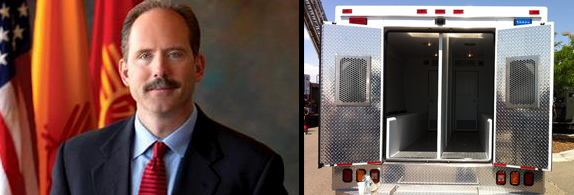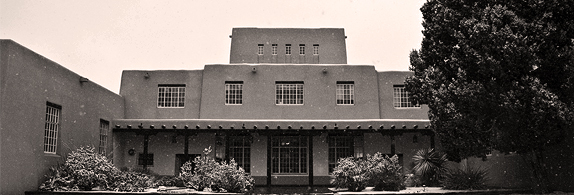Not Overreaching

There’s an eerie similarity between the downplaying of APD’s unconstitutional use of lethal and non-lethal violence, despite a scathing U.S. Department of Justice report to the contrary, and the persistent efforts on the part of Albuquerque’s ruling class to downplay the 24 million gallon jet fuel spill at Kirtland Air Force Base.
City Hall refuses to talk with the families of victims of police violence and does everything it can to cover-up, stonewall, and paint a rosy picture of its unconscionable obstinance, while the business community poo-poos the danger to public health that the KAFB spill represents almost to the point of trying to convince us that it really doesn’t exist at all.
The spin machines are whirring and editorialists are shilly-shallying. There seems to be a Grand Design to bore readers into hopeful indifference with so many contradictions and so called “balanced” reporting with pros and cons that they cancel each other out while leaving a mush of goo no one can bring themselves to investigate.
An editorial in the Albuquerque Journal last Monday, for instance, casts doubt on the first major sane act I’ve seen any elected officials take regarding the massive jet fuel poisoning of our water. The Albuquerque Bernalillo County Water Utility Authority (ABCWUA) board voted a few weeks ago to shut down the major wells around KAFB if any contamination should reach them. A sound idea to be sure! And who could argue with the prudence of that?
The great spinning Journal could. They’ve claimed that the most responsible thing the water authority could have done is, in fact, “irresponsible.” They said to shut down contaminated wells “may be overreaching.” And they said this on the basis, they claimed, of efforts in Santa Fe to remove, though carbon filters, fuel pollution that contain the highly toxic Ethylene Dibromide (EDB) from small leaks in the city.
So is the Journal’s recommending that we not close down major city wells if they are contaminated by jet fuel because it’s possible they could be cleaned up? And what are we supposed to do in the meantime while this possibility is explored? Drink contaminated water? And isn’t the long range plan of the ABCWUA to clean jet fuel from the aquifer to the level of agricultural usage, not to drinking water standards?
This baloney is so old there’s no way to chew it, much less swallow it. Sowing doubt to blunt any action is as old as the tobacco industry’s efforts to convince smokers that scientists had real doubts about the dangers of smoke and nicotine.
The Journal seems to base its opinion on the possibility of cleaning up a banned chemical, EBD, from our ground water, a chemical which the EPA has cautioned there is no safe level to ingest, zero. They are also basing their opinion, it seems, on tiny scale experiments in Santa Fe and trying to jolly us into thinking that they can apply that to removing EDB from 24 million gallons of jet fuel in a plume a mile long and a half a mile wide.
There’s never any cost attached to these cheery speculations, nor any time line for the magic to come true. Why is that? Because even the Journal senses that any remediation will require an act of Congress to appropriate the billions of dollars it will take.
And now the obfuscators are focusing exclusively on the removal of EDB, an anti-knock additive to jet fuel, not on the jet fuel itself. The aquifer around those wells near the spill is virgin water, pure and almost arsenic free, as Beverly Burris pointed out in Voices last week. It’s the sweet spot of the aquifer. And the Air Force has already ruined a part of it for decades to come, if not forever. Any kind of petroleum product in fresh water is a public health disaster and costs millions of dollars, in the case of KAFB perhaps billions, to clean up, but never to its original virgin state.
When the Journal accused the ABCWUA of “irresponsibly” “painting itself into a corner” with an ultimatum of closing contaminated wells “especially if treatment can bring contaminated water to acceptable drinking water standards,” it was exercising either the broken logic of lazy ignorance or the wily PR bromides of a damage control mastermind.
Neither the Journal nor other KAFB apologists say anything about how long or how much it would cost to clean up ruined water. Nor do they admit that it is practically impossible to make dirty water potable again. Even the groundwater contamination at the old GE plant, a Superfund site in the South Valley that is small in comparison to the KAFB spill, could take 30 or 40 years or more to clean up and when it’s clean to EPA standards it still won’t be drinkable.
Instead of downplaying pollution and police violence why not admit them and work to solve them? Because the downplayers don’t want to embrace the responsibility that seeking solutions imply.
Is the Mayor Going to Let This Slide By Too?

By now Mayor Berry has heard, I’m sure, that some of his police officers did the unthinkable after they arrested 13 people in an anti-police violence sit-in at City Hall a few weeks ago. He probably doesn’t believe it. I’m sure he doesn’t want to. The sit-in demonstrators were locked in “hot box” vans that had been sitting in the sun with their heaters on for more than half an hour, according to one of the victims, David Correia. Torture is torture by any other name.
I’m sure some people think that doesn’t sound so bad, but imagine sitting in your car in a hot parking lot with the windows up and the heater on in 90 plus degree weather, with no water, no relief, your hands cuffed behind your back. How would it feel if you knew you could do nothing about it, but were at the mercy of people who hate you, whom you’ve accused of wrong doing and who have proven to be your enemy. And to top it off, you find yourself in that van because you exercised your Constitutional right to speak your mind in public at a peaceful demonstration and hurt no one and no one’s property?
Is this acceptable behavior by public servants in Albuquerque? Does anyone think this sort of thing is right? Is anyone who knows about it not aghast and scandalized? Has Albuquerque become a place run by tyrants? Why isn’t everyone who knows about this condemning it as loudly as possible? What will the mayor do about it? Will he do anything? Will the major media cover it? Is this city going insane?
I think it must be. At the march against police brutality last weekend, we learn from strong early reporting by Jeff Proctor at KRQE that the APD had planted spooks in the parade, actual APD “intelligence officers” there to “protect” the marcher’s right to free speech, and to collect information for dossiers on the assembled. This, rightly, inflamed the New Mexico ACLU sufficiently to write a press release condemning local espionage. Albuquerque was told that these disguised agents were there because at the last rally there was a guy with an AK-47 in the crowd, a person almost everyone thought was an APD agent provocateur.
So now a witch-hunting spy squad is poking around and prying into activities of citizens who have committed no crime. Has the KGB come back to life as another Republican dirty trick?
Insanity, thy name is Burque.
Zeus’s Lightning Bolts at WIPP

In an interview a few weeks ago on Insight New Mexico nuclear storage expert Don Hancock from the Southwest Research and Information Center in Albuquerque, gave a description of behavior at the Waste Isolation Pilot Project (WIPP) near Carlsbad that would have caused Zeus to unleash his lightning bolts in outrage.
Zeus hated hubris more than anything. The ancient Greek Olympian blasted the arrogant, the self-satisfied, and all those who believe their own PR with his terrible flashing fury hurled down from the skies.
Apparently, the folks who have run WIPP over the years really have believed their own press releases – that the place was utterly safe, would be for millennia and that nothing really untoward, like a radiation leak, would ever escape from the huge rooms dug a half a mile underground in caverns of salt.
And so they never prepared for anything to go wrong. And that’s basically why we still don’t know what happened down there on Valentine’s Day more than five months ago.
As it turns out, there’s apparently no way to actually see or touch or get to the canisters filled with so called “low level” plutonium waste (that’s dangerous enough to have to been stored in salt mines) that apparently exploded with enough force to send radioactivity some three miles, first down a huge 3,000 foot long passage way and up a half-mile of ventilation shaft and then into the atmosphere and soil a mile and a half outside the WIPP storage area.
And why can’t we touch or see those canisters? Because the canisters are, I’m sorry to say, stuffed into an area in such a way that one can’t get to the canisters in the back where one or a number of which, it’s still undetermined, exploded. And that’s because there are no aisles between the canisters. And there are no aisles between them because they never thought anything would happen to them that would need close inspection.
There’s no way to see what happened to them first hand because there’s no way of getting to them without moving many other canisters. Of course one has to wonder why they don’t do that anyway. Until they do they have to rely on cameras suspended on booms to try to see what took place. Perhaps they worry that the explosion was so bad that if they move surrounding canisters more radiation will somehow leak out. Who knows?
But, as Don Hancock made clear, the nuclear storage world knew that canisters of the type stored at WIPP have been known to explode or release radioactivity in areas around the country where they are stored above ground including at Hanford, Washington, Oak Ridge, Tennessee, even at Los Alamos and other sites. This doesn’t happen frequently, but it does happen. Ah, but it would never happen at WIPP.
And crash comes Zeus’s lightning bolt.
And anyone who follows such things had been informed that somehow kitty litter was involved. An absurd idea to begin with. But we’ve been gulled into believing that it’s been proven that some form of what the media has called “kitty litter,” administered at Los Alamos, caused the canister or canisters to blow up because those silly scientists used the wrong stuff. Use a nutty metaphor – that’s the way to hook the gullible and transfer blame from WIPP to LANL. According to Hancock, no such thing has been proven. We don’t know what happened because we can’t examine the canisters because there are no aisles that lead from front to back.
Apparently the “kitty litter” solution was dreamed up by a man in Carlsbad who has been an ardent WIPP supporter and who, in fact, would like to see all of the nation’s nuclear waste – high level military and commercial – stored there. What better way to deflect attention from WIPP than to implicate Los Alamos in a hare-brained scheme.
This was a disaster that was never supposed to happen but because of hubris couldn’t help but happen. Zeus’s lightning bolt didn’t strike through a half a mile of salt, but it might as well have.
Zimmerman Library

Some buildings are cherished as old friends and even mentors. The Spanish Pueblo Revival style Zimmerman Library at UNM is such a place for me and many thousands of others I’m sure. It is a place that at once nurtured our identities as New Mexicans and expanded our awareness and longing to be citizens of the world.
When I first arrived at UNM in September 1958, my dorm room was in a discarded army barrack (one of many) on a barren lot that’s now the site of the College of Education. Right to the west of me was Zimmerman, with its iconic nine story high book tower, its Kenneth Adams murals, and its magnificent and welcoming reading rooms. Over the years I came to revere that building with something close to religious feelings. I came to admire it, too, as a symbol of ecumenical and synergistic energy, the hybrid creative power of our state and its human and natural landscapes.
And I came to trust it like a mentor. It was always true to itself, unwaveringly real in its eccentricity and steadfast in its dignified beauty. It was an example to try to follow, an example of authenticity which supported and inspired so many students, myself included, as we started out on a life of trying to think for ourselves.
Completed in l938, it is a monument to New Mexico culture, New Mexico village arts, to UNM President James F. Zimmerman who had the vision to commission it, to the WPA which funded it and so many historic buildings on campus, and to architect John Gaw Meem who designed it and probably oversaw every inch of its construction and had a say in the decisions around every item of its furnishings.
It is a pre-war building that reflects a world of personal scholarship and faculty leadership, a world that I think of as the “old New Mexico” of my experience, a world that I caught a glimpse of in the late l950s and which started slowly vanishing and transforming almost as soon as I arrived. A world in which the forces of globalism were in their harmless infancy and where “standard” American culture was kept in check by a counterculture of New Mexicans, native, local, and transplants who were committed to honoring what New Mexico meant to them.
John Gaw Meem was such a person early on in the l920s when he came to Santa Fe to cure his T.B. After becoming an architect he and others worked to restore and protect mission churches at Zia and Acoma Pueblos, and at el Santuario de Chimayo and San Jose de Garcia at Las Trampas, among many others. Meem became a student and admirer of New Mexico architecture and folk art. The tin work in the older part of the Library, and the handmade furniture were all designed by him on traditional patterns and produced by local crafts people. One can see his construction notes housed in the Meem Collection in Zimmerman. He was involved with every aspect of the building right down to the exact color of the wood stains. Meem’s perfectionism was leavened by devotion to, and admiration for, the cultural genius of New Mexico.
When I would go into those reading rooms, with their huge carved vigas and corbels, it felt like being in the interior of a church. And indeed the ceilings of the reading rooms were modeled after the great church on top of the mesa of Acoma Pueblo, San Esteban del Rey, the roof of which he helped repair from l924 to l927.
Those reading rooms were for me so physically beautiful that they made thinking and learning feel as important as carrying out a religious duty. I would go there every day and sometimes deep into the night trying to repair my ignorance in the fortress of learning that Zimmerman had become. I still go there when I need to think things through and clear out the cobwebs of doubt and complication.
Zimmerman celebrated its 75th anniversary last year. And every time I find my way to the grand old readings rooms I say my silent thanks to those generations of people who worked to preserve it, to architects George Pearl and Van Gilbert who contributed additions to it, to Van Dorn Hooker, University Architect, who honored its history and meaning with every decision he made, and to the legions of scholars and alumni who love that building and the love of learning it inspires and who have championed it over the decades with a protective aura of admiration and respect.
And, by the way, my wife, the artist Rini Price, who came here in l958 as well and studied with Kenneth Adams in his later years, feels the same way.
(Photos: Skull from eek the cat, APD transport vehicle by Rescuenav, Zeus by Tilemahos Efthimiadis, lightning by Henrik Thorn)




Responses to “Provincial Matters, 6-30-2014”